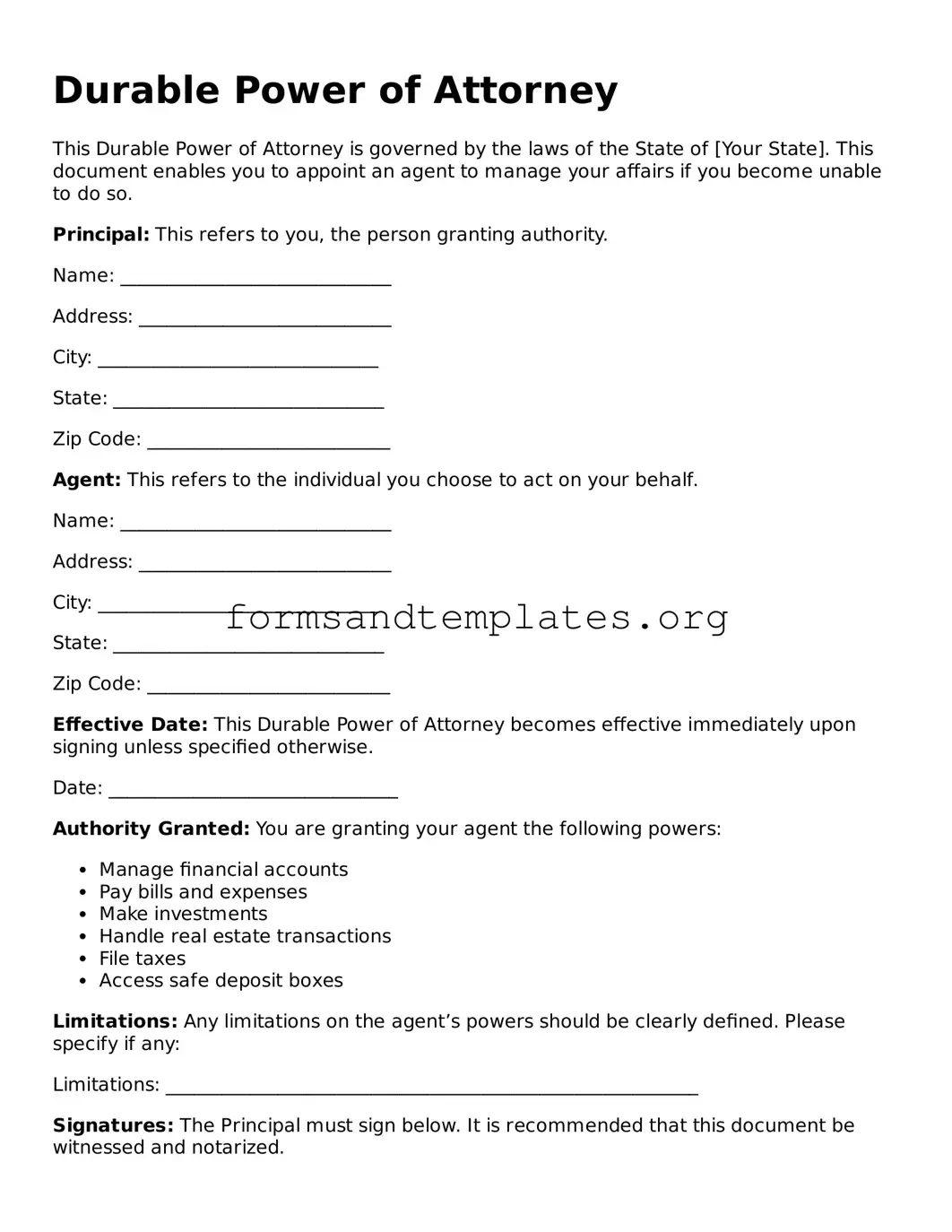Durable Power of Attorney
This Durable Power of Attorney is governed by the laws of the State of [Your State]. This document enables you to appoint an agent to manage your affairs if you become unable to do so.
Principal: This refers to you, the person granting authority.
Name: _____________________________
Address: ___________________________
City: ______________________________
State: _____________________________
Zip Code: __________________________
Agent: This refers to the individual you choose to act on your behalf.
Name: _____________________________
Address: ___________________________
City: ______________________________
State: _____________________________
Zip Code: __________________________
Effective Date: This Durable Power of Attorney becomes effective immediately upon signing unless specified otherwise.
Date: _______________________________
Authority Granted: You are granting your agent the following powers:
- Manage financial accounts
- Pay bills and expenses
- Make investments
- Handle real estate transactions
- File taxes
- Access safe deposit boxes
Limitations: Any limitations on the agent’s powers should be clearly defined. Please specify if any:
Limitations: _________________________________________________________
Signatures: The Principal must sign below. It is recommended that this document be witnessed and notarized.
Signature of Principal: _________________________________
Date: ________________________________________________
Witness: Two witnesses are encouraged for this document.
Witness 1 Signature: _________________________________
Witness 1 Name: _____________________________________
Date: ________________________________________________
Witness 2 Signature: _________________________________
Witness 2 Name: _____________________________________
Date: ________________________________________________
Notary Public:
State of [Your State], County of _________________________
Subscribed and sworn to before me this ____ day of __________, 20__.
Notary Signature: ______________________________________
My Commission Expires: ________________________________
